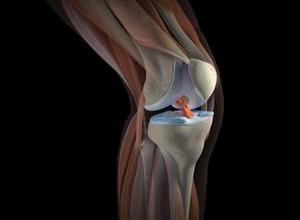Skin cancer has become very common and is a scourge of our days. Why? Although the cause of cancer of the skin are different factors (latitude, altitude above sea level, the ozone layer, thickness of cloud cover), yet the main reason is excessive exposure to the sun.
Lifestyle of people has changed, so has become more popular and affordable for people who work constantly in the room, spend their weekends outdoors and vacations on the beach. Changed and fashion.
Early bathing suits were modest and long, now swimwear became more open. Accordingly, the incidence of skin cancer has increased. Maybe we need to follow the example of the desert dwellers, who go about in long, flowing robes and cover their heads?
The most common three types of skin cancer: squamous cell carcinoma, basal cell carcinoma and malignant melanoma.
Squamous and basal cell skin cancer:
Squamous and basal cell carcinomas begin in the outer layer of the skin (the epithelium), the thickness of which is usually equal to 1 millimeter. These types of cancer occur with constant exposure of the sun on exposed skin – on the hands and face, those who, for example, works on the street. Carcinoma usually starts with lesions on the skin or nodular formation, then it grows, bleeds and does not heal completely. It may extend and capture surrounding tissue.
Basal cell carcinoma is about 75% of all cases of skin cancer. Squamous cell carcinoma is less common, but more often metastasized, i.e. spread to other organs. So it is very important early diagnosis. Although these cancers are easily treatable, but if untreated, they can lead to death.

Skin cancer melanoma:
Malignant melanoma accounts for 5% of all cases of skin cancer. It starts with the outer layer of the skin. One of the main reasons for the development of melanoma is intermittent, intense sun exposure on the skin, which expose themselves to people who are constantly working in the room during the holidays. About 50% of melanomas develop from moles, located on the lower legs and upper back.
If early on not to treat the melanoma, she goes to the dermis (inner skin layer), where the blood vessels and lymph and metastases can spread quickly. According to oncologists, the paradox is that if melanoma to be detected at an early stage, it can be easily cured. But if the melanoma has already metastasized, it is very resistant to treatment radiation therapy and medicines. With metastatic melanoma is only 2-3% of patients live more than 5 years.
In the middle of the XX century melanoma was observed in 1 out of 1,500 people, but by 2000, mainly because of the fashion for tanned body, she was every 75 people. Professor of European Society of medical Oncology George. Kirkwood, said the reason for 40% of cases of melanoma is a genetic factor, and 60% – excessive stay on the sun. More susceptible to the disease of melanoma women aged 23 to 50 years. Under the influence of solar radiation changes in the pigment cells of the skin can occur in childhood and teenage years, but the cancer will develop many years later.
Melanoma – signs:
The main signs of malignant melanoma are jagged edges, asymmetry, diameter, color change.
- 1. THE UNEVEN EDGES. Ordinary moles are more distinct and smooth edges. The melanoma in the early stages often pointed or toothed shape, uneven border.
- 2. ASYMMETRY. A normal mole is round and symmetrical. At an early stage most melanomas are asymmetrical in shape.
- 3. The DIAMETER of melanoma is more than ordinary moles, and at an early stage it can grow up to 6 mm in diameter.
- 4. THE CHANGE OF COLOR. Normal moles are always brown. The first sign of melanoma often are various shades of brown, reddish or black moles. If melanoma develops, it can be other colors: red, white, and blue.
Who has more risk of developing skin cancer?
Except for those who constantly exposes himself to intense, intermittent sun exposure, more risk of getting cancer of the skin in people with fair skin, light hair and eyes, moles and freckles, and if in a family someone was ill with cancer of the skin. A much less common cancer of the skin in dark-skinned people, but they are not immune from it. Although a tan is a protective reaction of the skin to ultraviolet rays, but while sun damaged skin, and repeated damage increases the risk of developing cancer.
Skin cancer treatment:
Methods of treatment depend on the cancer type, size and location of the tumor, and previous treatments. Treatment methods, surgical excision, curettage, cauterization with an electric needle, cryosurgery (freezing), radiation therapy. All cancer cells are difficult to remove. In the case of squamous cell and basal cell carcinomas effective Mohs surgery with the aid of the microscope is controlled by a layer-by-layer removal of cells. The cure rate is 95-99%. This method allows you to preserve more healthy tissue and reduce scars and scarring. But may still require cosmetic restoration of tissues.
The national Institute of aging in America States that all types of skin cancer can be cured if timely detect the disease and seek medical attention. Therefore, the key is early diagnosis.
Skin cancer – prevention:
How to prevent skin cancer? To protect themselves from the harmful effects of the sun, is very important from childhood to know the preventive measures. Most people get about 80% of ultraviolet radiation during the first 18 years of my life. If a man once got a bad sunburn blisters, then later in life approximately 2 times increased risk of developing melanoma. This means that skin cancer has been developing for more than 20 years.
Sunscreens and lotions are better to use the ones that hold the UV rays and UV rays V. it is Important to protect your skin even on cloudy days, as 85% of UV rays penetrate through the clouds. It is better to use cream with protection factor (SPF) of at least 15. How to determine what time you will protect the cream? For this you need to multiply the number of minutes for which you would normally burn in 15. Apply sunscreen every 2 hours. But applying sunscreen, do not think that you are fully secured for protection. Absolute protection from sunburn and from skin cancer cannot guarantee that no cream or lotion sunblock. In addition, the use of the cream even indirectly increases the risk of cancer, if you stay longer in the sun, mistakenly believing that is protected but at the same time, exposing themselves to more radiation exposure.
According to the study revealed that those who use cream or lotion with a sun protection factor of 30, 25% spend more time in the sun than those using a cream or lotion with a protection factor of 10. The study’s author reports that to prevent skin cancer, especially melanoma, the use of sunscreen does not give any results, but the data indicate a close relationship between long exposure and cancer. Therefore, tanning, continue to use protective lotions and creams from the sun, but they are not intended to prolong the time spent in the sun. The maximum stay in the sun without a break – no more than 2 hours.
Experts say that the most effective way to protect yourself from skin cancer is clothing that protects from the sun and try not to go out in the sun, when it shines with particular intensity.
Tan in the Solarium. Is it safe to tan in tanning under the lamps of sunlight? It is known that only 20 minutes of tanning is equivalent to approximately 4 hours of sun exposure. It used to be that indoor tanning is safe, as here are only applied UV rays And which do not give visible burns. Now experts say that UV rays And penetrates deeper into the skin than UV rays, and can suppress the immune system and cause skin cancer. According to the study, women who once a month or more visit the Solarium, 55% increased chance of developing melanoma.
So, remember that long exposure to the sun can cause skin cancer in 20 years or more.



